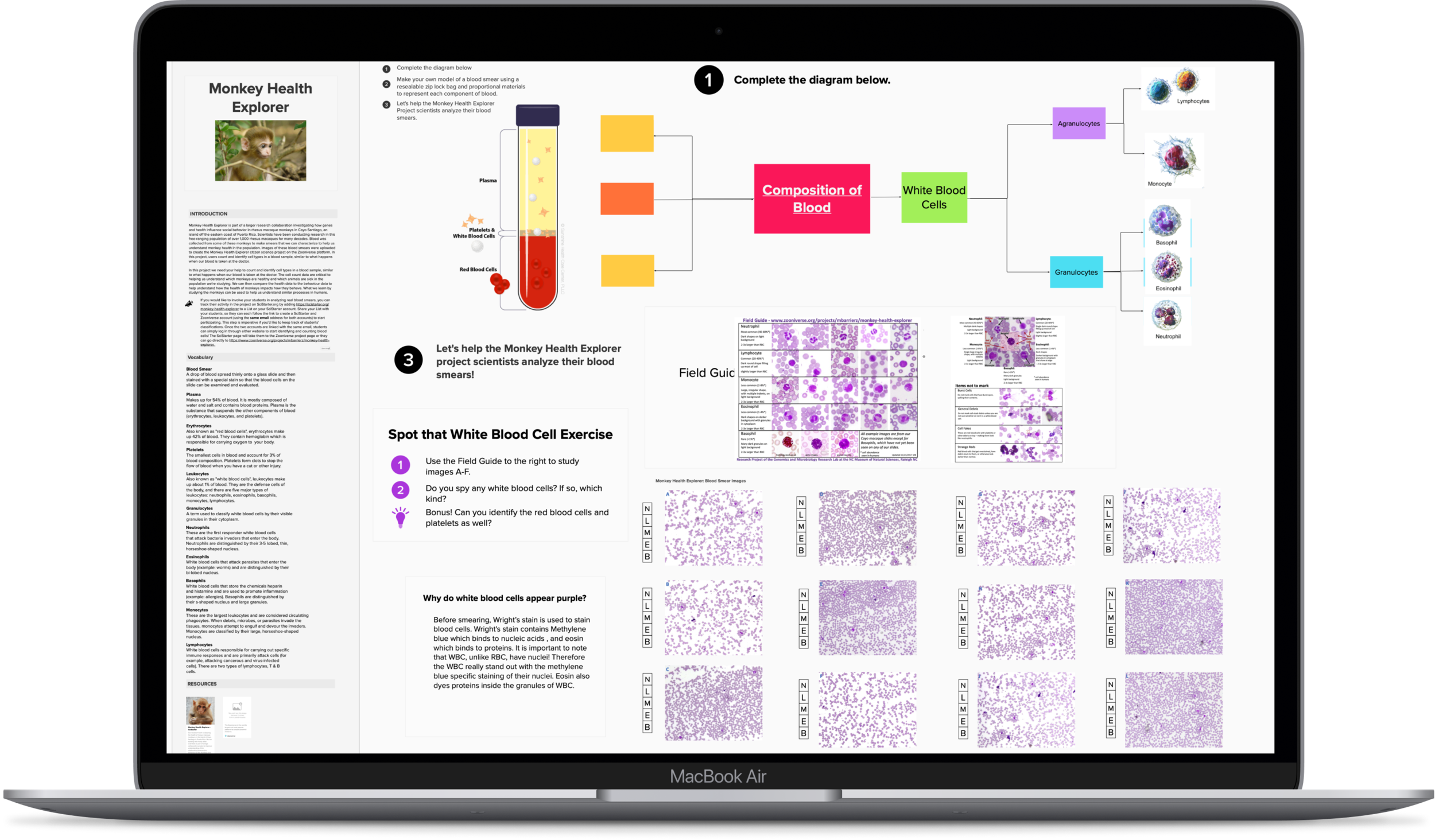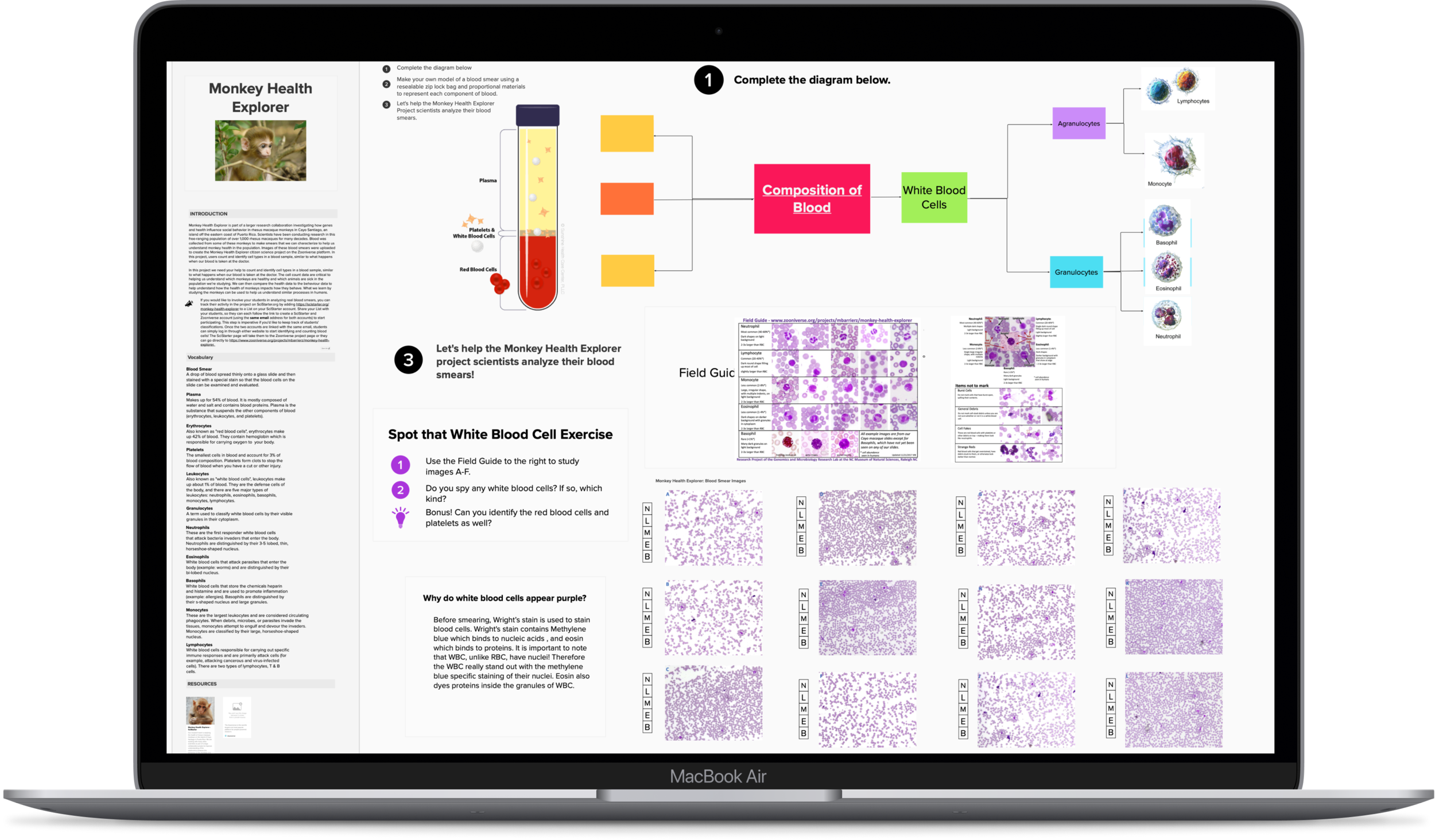Monkey Health Explorer Project
A collaboration with the Genomics & Microbiology Research Lab at the North Carolina Museum of Natural Sciences
monkeyhealthexplorer.org
The Microbiology & Genomics Lab at the North Carolina Museum of Natural Sciences needed to improve the user experience of their Monkey Health Explorer project, which aimed to increase participation in research on monkey health. To achieve this goal, they hired me as a product designer to create educational materials (virtual and paper) that would make the project more accessible and engaging for users.
Introduction
The problem:
The Monkey Health Explorer Project is in need of modern outreach materials to introduce users to the project and improve participation in citizen science
The goal:
Design educational materials to engage users and increase accessibility of the Monkey Health Explorer Project in schools
My role:
Product designer leading the landing page redesign from conception to delivery.
Responsibilities
Conducting interviews, paper and digital wireframing, low and high-fidelity prototyping, conducting usability studies, accounting for accessibility, iterating on designs, determining information architecture, and responsive design.
Understanding the User
Research:
I conducted user research to understand the needs and preferences of Monkey Health Explorer participants. I analyzed feedback from previous users, conducted surveys, and ran user testing sessions. Based on my research, I identified the key pain points of the existing platform, including the lack of clarity around the research goals and the complexity of the user interface.
Clarity
Complexity
With the variability of blood cell images, users had difficulty understanding what to identify as a white blood cell cellUsers weren't sure what the research goals of the Monkey Health Explorer Project wereUser pain points
Starting the Design
Design Process:
To address these issues, I designed educational materials that included virtual tutorials, printable posters, and infographics. The tutorials explained the research goals and the process of data collection, while the posters and infographics visualized the data in a more engaging and digestible format.
-
Monkey Health Explorer virtual lesson activity. It can be used virtually and made interactive.
-
Monkey Health Explorer activity packet to pair with lesson plan
-
Blood composition crossword puzzle
Results:
The new educational materials and user interface design significantly improved the user experience of the Monkey Health Explorer project. The virtual tutorials were accessed by more than 80% of participants, while the posters and infographics were distributed to multiple schools and universities. The simplified user interface design also led to a 60% increase in participation rates, and the feedback mechanisms helped to identify and address further issues in real-time.
Classifications per Week
Going Forward
Conclusion
Overall, the educational materials and user interface design were successful in improving the user experience of the Monkey Health Explorer project and increasing participation rates. By utilizing user-centered design principles and conducting thorough user research, I was able to create a more engaging and accessible platform that ultimately achieved the client's goals.
Moving forward, I hope to further test and iterate designs to continue enhancing the user experience and boost participation.





